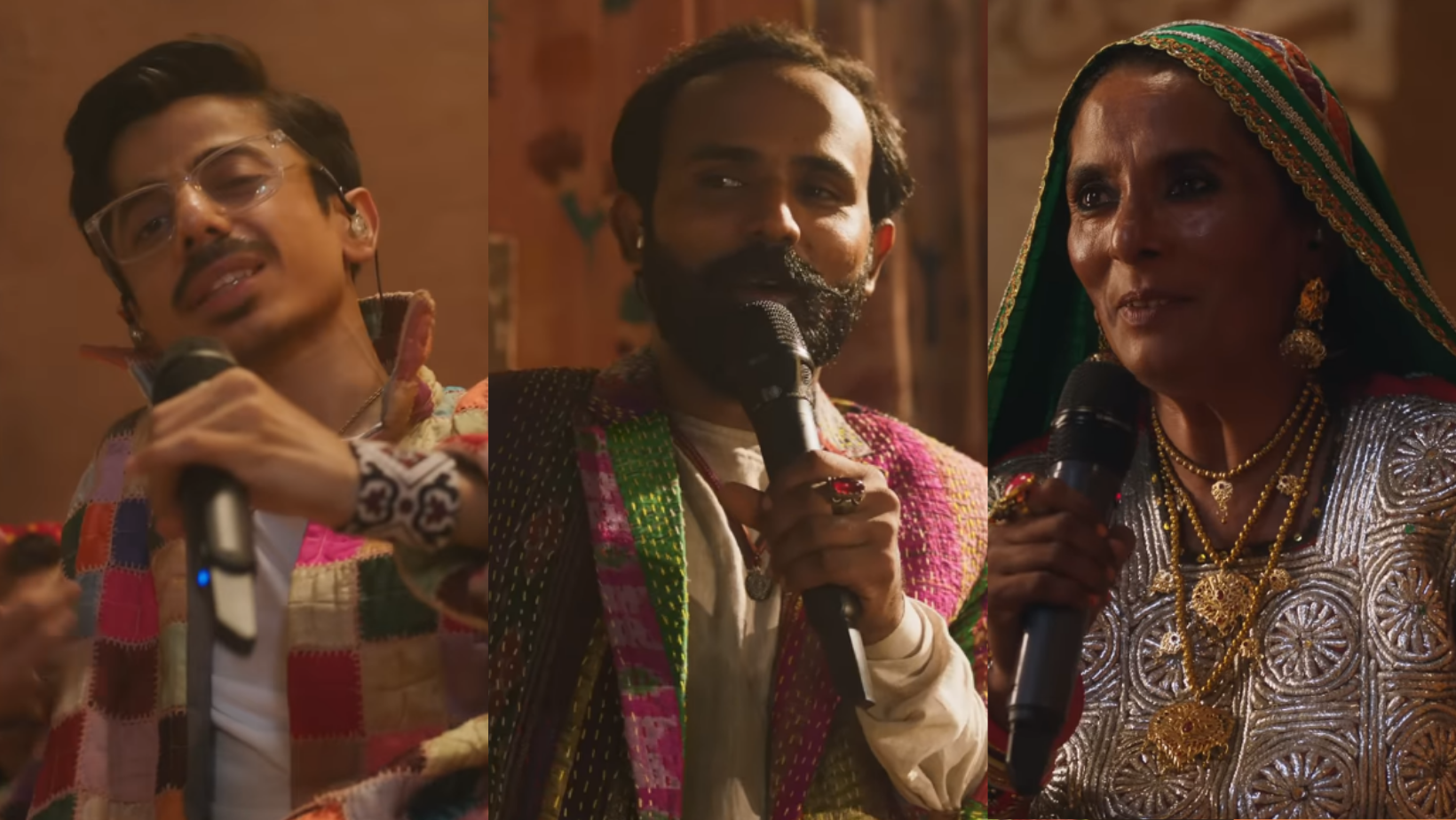Coke Studio Pakistan returns for its 15th edition with a signature Coke Studio single, following a year-long break. One may argue that a brand’s availability alone speaks volumes about its long-standing familiarity with the market. However, the tried-and-true is usually the opposite of creativity and surprise. The first game of this season is when these tensions are most clearly displayed.
With minimal preface and social media buzz, Aayi Aayi follows Coke Studio’s diversity and inclusiveness policy. The politics of the music franchise are not new; rather, they have undergone several changes before taking on a shape of their own. The song’s main performers, Noman Ali Rajper, Babar Mangi, and Marvi Saban, make it obvious what it is trying to reify: Sindh’s aesthetics.
Perhaps a bit too much attention is devoted to the details. A strong production design like the one in Aayi Aayi is now more of an expected than an accomplishment for a band with over ten years of experience in the music business. This is not where the track falls short. A lady covers a wall with a large quilt made of Sindhi patchwork ralli, as others kneel and create rangoli. There’s enough of symbolism for the counting person.
The track tries to etch a Sindhi flare in everything from its musical notes to its set and costume design, especially Babar Mangi’s outstanding outfit. However, the audio experience is distinctly lackluster for individuals who are familiar with Coke Studio’s past releases and can anticipate the song’s chorus right away.
The song Aayi Aayi isn’t awful by any means. With a duration of five and a half minutes, the song opens with the vocals of Noman Ali Rajper, who uses a moderate degree of autotune—a fully contemporary vocal production approach that enriches rather than overpowers. Throughout the song, Noman’s voice acts as a solid foundation, directing the changes and preserving the intensity of the melody. In this opening act, he stands out as a performer due to his captivating presence, both physically and aurally.
One of the standout moments of the song is the change into Babar Mangi rap section. In addition to delivering powerful words, Babar infuses the song with a tangible energy that accentuates its traditional origins. Layers of depth are added by his ad-libs and the subdued backup voices throughout his stanza.
Although her contribution is utilized less frequently, Marvi Saban’s is no less significant. Her vocal skills comes through as she takes center stage, especially during the bridge, giving the song a soulful touch that enhances its cultural richness.
Even with several overt attempts to provide a uniquely Sindhi collaboration and liberal use of local instruments, listening to Aayi Aayi with closed eyes will still result in the song sounding the identical if it were performed in Balochi, Pashto, or Seraiki. Season 15 has begun with a reluctance to experiment, even if it has perfectly lined up with Coke Studio’s concept of fusion music.
This may be partially due to Xulfi introduction of the music video style in season 14. The question of what is lost when optics do the talking is raised by the tendency towards representation, which ultimately becomes about what is seen rather than heard. In the same year, Coke Studio’s episodic model came to an end, with one song every week replacing the mini-album that was included in each episode.
In contrast to the premiere of season 2, when viewers watched Atif Aslam’s Jal Pari and Shafqat Amanat Ali Khan’s Khamaaj in the same show, Aayi Aayi has the ability to fully engage its audience before its successor can take off. Similar to other major music marketplaces, it’s safer to repackage the classics rather than creating brand-new songs.
I am a dedicated student currently in my seventh semester, pursuing a degree in International Relations. Alongside my academic pursuits, I am actively engaged in the professional field as a content writer at the Rangeinn website.







